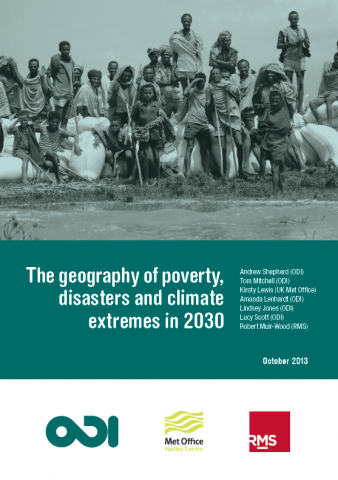The geography of poverty, disasters and climate extremes in 2030


This report, The geography of poverty, disasters and climate extremes in 2030, examines the relationship between disasters and poverty.
The report argues that if the international community is serious about eradicating poverty by 2030, it must address the issues covered in this report and put DRM at the heart of poverty eradication efforts.
The report is structured in six sections. Section 1 outlines the links between disasters, poverty and impoverishment. Section 2 maps out the geography of poverty in 2030, while Section 3 highlights the projected geography of ‘natural’ hazards. Section 4 examines the capacity of the countries at greatest risk to reduce disaster risk and respond to disasters. Section 5 brings the analysis together to build a picture of both poverty and hazard risk in 2030, together with today’s disaster risk management and adaptive capacity highlighting possible variations to the trends and providing in-depth country analysis. Finally, Section 6 sets out possible policy responses for future international agreements, development cooperation, countries of concern and actions by the research community.
– 2013
